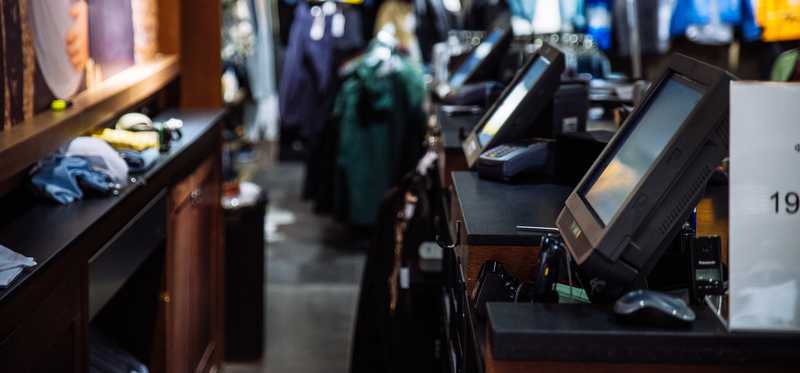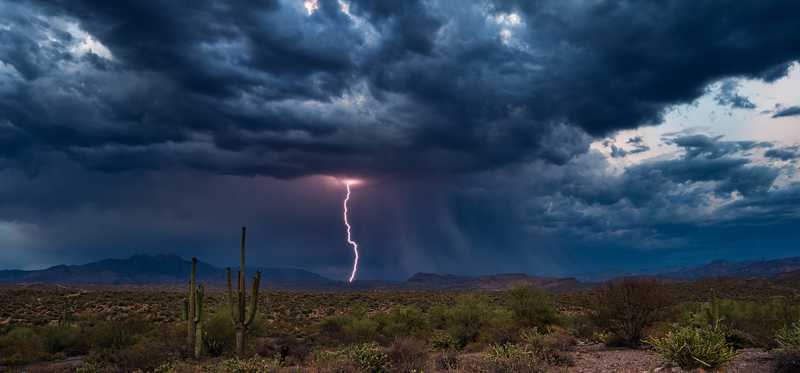10 Reasons to Prepare for Another Stock Market Crash

10 Reasons to Prepare for Another Stock Market Crash
Flying how, but for how long?
Investors dumped stocks in February and March, sending the broader market lower by 30% or so. Now, just a handful of months later, the stock market has made back those losses and is pushing toward new all-time highs. That's not exactly the normal path following a bear market, or at least not the normal speed of the recovery process. And, perhaps most important, many of the problems that existed prior to the last crash are still with us. Here are 10 reasons why investors should take the market's swift recovery with a giant grain of salt because the next market crash could easily be just around the corner.
5 Winning Stocks Under $49
We hear it over and over from investors, “I wish I had bought Amazon or Netflix when they were first recommended by the Motley Fool. I’d be sitting on a gold mine!” And it’s true. And while Amazon and Netflix have had a good run, we think these 5 other stocks are screaming buys. And you can buy them now for less than $49 a share! Simply click here to learn how to get your copy of “5 Growth Stocks Under $49” for FREE for a limited time only.
Previous
Next

1. Back at all-time highs
Just a few short months following a swift bear market, the S&P 500 Index is pushing toward record highs again. Normally that takes a little bit longer, with the index requiring around five years to claw its way back from the last big downturn during the 2007 to 2009 recession. The absolute level isn't really the big issue, though. The problem is that the broader market's valuation remains extreme.
For example, the market's cyclically-adjusted P/E ratio (CAPE), also known as the Shiller P/E, currently sits at around 32 times. This measure looks at P/E over time, helping to remove short-term fluctuations in things like profit margins. The current CAPE ratio is roughly 25% above the average over the past two decades (roughly 26 times). And it's way above the low point of 13 times. The bear market earlier in the year did little to change the extreme valuation in the stock market today and that means there's still a great deal of risk that another downturn is waiting in the wings.
ALSO READ: 2 Stocks to Buy if You're Worried About Another Market Crash
Previous
Next

2. A narrow market
Another interesting phenomena that's taking shape right now is that the stock market is being driven by just a small number of stocks. For example, Apple (Nasdaq: AAPL), Alphabet (Nasdaq: GOOG), Amazon (Nasdaq: AMZN), Facebook (Nasdaq: FB), and Microsoft (Nasdaq: MSFT) recently accounted for 22% of the S&P 500 Index's market capitalization, according to CNBC. That's a massive overweighting when you consider that there are around 490 other companies in the index. Sure, many of these big-name tech companies are doing well as businesses right now, so investors are buying them. But the performance of just this handful of stocks is having an outsized influence on the market today.
Think about what will happen when investors decide that these technology trees won't grow to the sky, to paraphrase an old Wall Street saying. If this quintet sells off sharply the market will tank. If investors get lucky and the stocks just tread water for a while (think years), then the market "only" has to deal with a performance headwind. But either way, when the broader market is relying on so few stocks to support a massive advance, there's likely to be underlying problems to think about.
Previous
Next

3. Massive herding
Point two and three are similar, but different. That just five stocks are so important to the stock market's rise is a sign of herding activity by investors that far too often follow each other like sheep. But there are more signs of herding to look at. For example, a little bit of news on a company and its stock will take off like a rocket. Eastman Kodak (NYSE: KODK) is a prime example.
When news broke that Kodak was in line for a government loan to help it produce chemicals for the medical space the stock rallied. Perhaps not surprising, until you consider that the stock advanced 600% at one point following that information hitting the market. It is a big opportunity for Kodak, but that's an insane price advance that suggests investors are looking to get rich quick -- and all trying to do it the same way. That's not a particularly good long-term investment approach that often becomes more prominent at market tops. Notably, that loan is on hold now because of the odd trading in the shares... leading to a massive collapse in the stock price.
Previous
Next

4. Frantic trading
The quick rise and fall of Kodak's shares highlights another important feature of the market today, holding periods are getting shorter and shorter. In June the average holding period for a stock across the market was just 5.5 months, according to Reuters research. That's down from 8.5 months at the end of 2019 and 14 months in 1999. While Kodak was a one-off case, the broader trend is clearly for investors to buy and sell more frequently. That flies in the face of the wisdom that Warren Buffett espouses about the optimal holding period being "forever."
One of the big issues today is that there's very little friction to trading, since discount brokers, largely driven by Robinhood, are now offering commission-free trading. Put simply, if there's no cost to buying and selling stocks investors are going to buy and sell more often. Just how big an issue is this? Relatively young Robinhood reported more trading volume in June than long-time industry leaders like TD Ameritrade, Interactive Brokers, Schwab, and Etrade. That's amazing given the relatively small size and short history of Robinhood's business, and it's not a great sign for the overall market.
5 Winning Stocks Under $49
We hear it over and over from investors, “I wish I had bought Amazon or Netflix when they were first recommended by the Motley Fool. I’d be sitting on a gold mine!” And it’s true. And while Amazon and Netflix have had a good run, we think these 5 other stocks are screaming buys. And you can buy them now for less than $49 a share! Simply click here to learn how to get your copy of “5 Growth Stocks Under $49” for FREE for a limited time only.
Previous
Next

5. Thrill seekers
There's another connection between two important points here, when you consider who all of these traders buying and selling shares with, what appears to be utter abandon, are. The answer is investors who have probably never lived through a prolonged market downturn (the median age of a Robinhood account holder is just 31). And there's notable anecdotal evidence that many are adrenaline junkies that formerly got their fix gambling on sports or in the casinos.
Iconic business weekly Barron's and sports-focused Sports Illustrated have both highlighted the trend. It's pretty simple, really, with gambling opportunities shut down or at least limited by COVID-19, gamblers have found another outlet -- stocks. And since they are making money right now they are probably going to stick around... until they start losing money. Then they will go back to sports betting and casinos. That could materially change the market's dynamics if, perhaps when, it happens.
ALSO READ: 3 Types of Stock That Can Withstand Another Market Crash
Previous
Next

6. The lingering pandemic
So far the focus has been on issues specific to the stock market. Only investing doesn't happen in a vacuum. What's happening on Main Street is often just as important as what's happening on Wall Street. Today the biggest issue, to state the obvious, is COVID-19. The pandemic has impacted just about every aspect of life, usually in a negative way.
The real problem, however, is that no country has yet figured out a way to deal with COVID-19. And while there's lots of talk about a vaccine, the truth is that creating one that is effective, safe, and widely available is no easy task. Meanwhile, COVID-19 cases continue to rise with new hot spots popping up once old ones start to flare out. This illness has proven very difficult to beat and until there's more progress, it will be a material big wild card. With so much hope placed on a vaccine, meanwhile, investors could quickly run for safety if that hope proves misplaced.
Previous
Next

7. Economic weakness, the world is over
COVID-19 has led to many problems, with one of the worst being the economic impact of the efforts to contain its spread. Countries around the world basically chose to shut non-essential businesses and ask, or force, residents to stay home in an attempt to slow the coronavirus down. While that appears to have worked, to some degree, the economic hit has been huge.
The United States, for example, fell into a recession in February. Other countries around the world are struggling mightily, too. Reopening for businesses, meanwhile, hasn't gone particularly well, since COVID-19 cases are flaring up again now that countries are loosening restrictions. Note that this isn't happening in one country or region, it's a global event. The world struggling economically seems an odd backdrop for all-time highs in the stock market. If economic weakness persists, investors might eventually decide that the dichotomy here doesn't make investing sense.
Previous
Next

8. Jobs are going away, for good
One of the hopes appears to be that once economic activity starts to pick up in a more meaningful way that the United States, and other countries, will simply go back to normal. But that's looking less and less likely. Given the scale of the impact, things could fall well short of normal. One issue that's particularly troubling is employment.
With non-essential businesses shut, U.S. employment skyrocketed to levels not seen since the Great Depression. The hope appears to be that this is a temporary spike and that people will quickly get back to work once economic restrictions are lifted. So far that story has played out, with unemployment falling notably since the early spike. Only it is beginning to look like many of the jobs that were lost will never come back. At this point, half of all workers fear that temporary job cuts will turn into permanent ones, according to a recent Associated Press-NORC Center for Public Affairs Research survey. That's terrible to even consider, but the fact is that if too many jobs go away permanently the economy will have a harder time recovering... and Wall Street will likely get a lot more jittery about the future.
Previous
Next

9. Earnings are improving, but the outlook is still dim
At the intersection of Wall Street and Main Street are the public companies that have been reporting earnings over the last few weeks. Some companies, notably in the technology sphere, are doing quite well. Many more, however, are struggling, including those in the retail, gaming, amusement, real estate, aerospace, and energy sectors. It appears that investors have basically written off the second quarter and are instead looking for signs that the future will be better than the recent past.
That's not a very high bar. And it misses the longer-term issues here, since some companies may end up facing materially-changed landscapes even after COVID-19 is better contained. For example, retail stores are going bankrupt in large numbers. To survive, many are shifting toward online, but that's usually less profitable than a physical location. In other words, COVID-19 could lead to even tighter margins than usual in the retail sector over the long term, while leaving many landlords with vacant properties. Sure, the earnings future is brighter than the recent past, but that's a far cry from good. If investors decide that that "better" isn't enough, look for stocks to sell off again.
ALSO READ: 3 Reasons Not to Worry About a Stock Market Crash
Previous
Next

10. The end of government support
The U.S. government has been working aggressively to support the economy during the COVID-19 pandemic. That's included things like enhanced unemployment benefits and government-mandated rent and debt deferrals. These efforts are one of the reasons why the U.S. economy has held up as well as it has so far. But as the current round of talks on additional assistance points out, continued support isn't a given.
In fact, even if there is an agreement today, eventually the support will have to wind down. When that happens a lot of people will likely find themselves in a deep economic hole. Evictions could rise. The level of bad debt could skyrocket. And bankruptcies, both on the personal and business fronts, could pick up to worrying levels. Wall Street appears to be ignoring this issue, but based on the time-limited nature of the assistance programs, the end here could hit like slamming into a brick wall. If the shock is big enough, it would likely lead to investors running for the hills.
5 Winning Stocks Under $49
We hear it over and over from investors, “I wish I had bought Amazon or Netflix when they were first recommended by the Motley Fool. I’d be sitting on a gold mine!” And it’s true. And while Amazon and Netflix have had a good run, we think these 5 other stocks are screaming buys. And you can buy them now for less than $49 a share! Simply click here to learn how to get your copy of “5 Growth Stocks Under $49” for FREE for a limited time only.
John Mackey, CEO of Whole Foods Market, an Amazon subsidiary, is a member of The Motley Fool’s board of directors. Suzanne Frey, an executive at Alphabet, is a member of The Motley Fool’s board of directors. Teresa Kersten, an employee of LinkedIn, a Microsoft subsidiary, is a member of The Motley Fool’s board of directors. Randi Zuckerberg, a former director of market development and spokeswoman for Facebook and sister to its CEO, Mark Zuckerberg, is a member of The Motley Fool's board of directors. Reuben Gregg Brewer has no position in any of the stocks mentioned. The Motley Fool owns shares of and recommends Alphabet (C shares), Amazon, Apple, Facebook, and Microsoft and recommends the following options: long January 2022 $1920 calls on Amazon, short January 2022 $1940 calls on Amazon, long January 2021 $85 calls on Microsoft, and short January 2021 $115 calls on Microsoft. The Motley Fool has a disclosure policy.
Previous
Next
Invest Smarter with The Motley Fool
Join Over Half a Million Premium Members Receiving…
- New Stock Picks Each Month
- Detailed Analysis of Companies
- Model Portfolios
- Live Streaming During Market Hours
- And Much More
READ MORE
HOW THE MOTLEY FOOL CAN HELP YOU
-
Premium Investing Guidance
Market beating stocks from our award-winning service
-
The Daily Upside Newsletter
Investment news and high-quality insights delivered straight to your inbox
-
Get Started Investing
You can do it. Successful investing in just a few steps
-
Win at Retirement
Secrets and strategies for the post-work life you want.
-
Find a Broker
Find the right brokerage account for you.
-
Listen to our Podcasts
Hear our experts take on stocks, the market, and how to invest.
Premium Investing Services
Invest better with The Motley Fool. Get stock recommendations, portfolio guidance, and more from The Motley Fool's premium services.